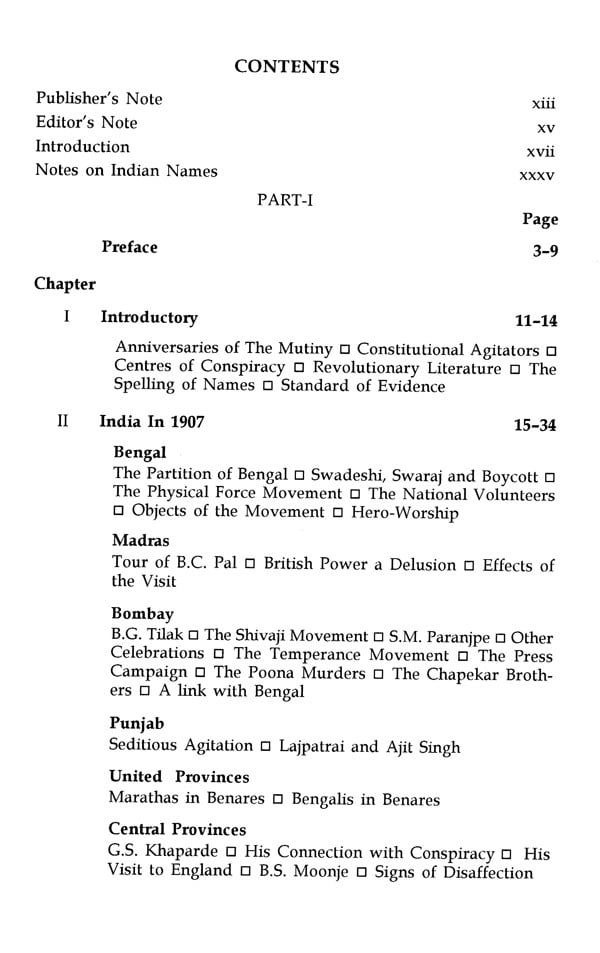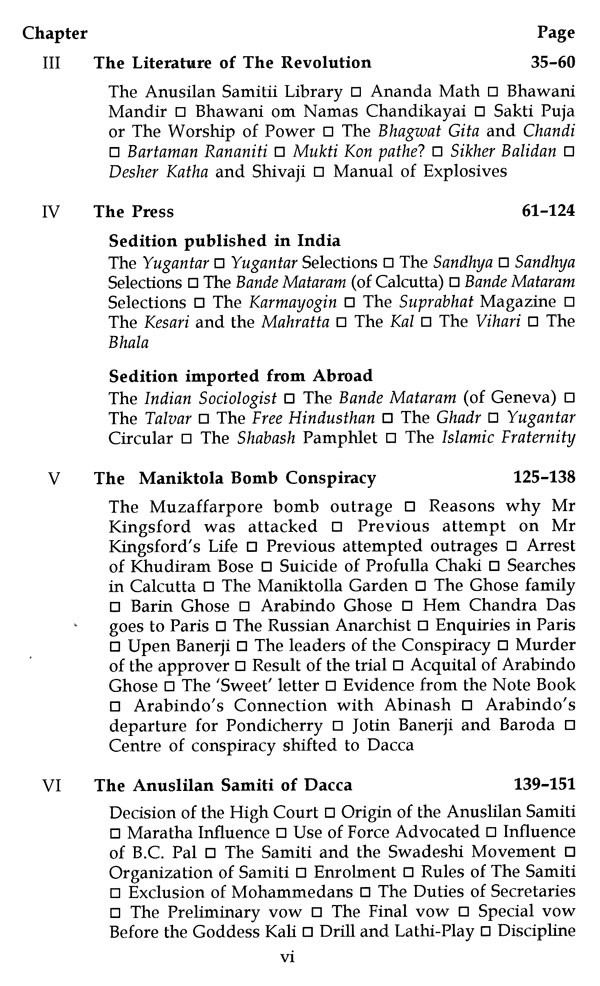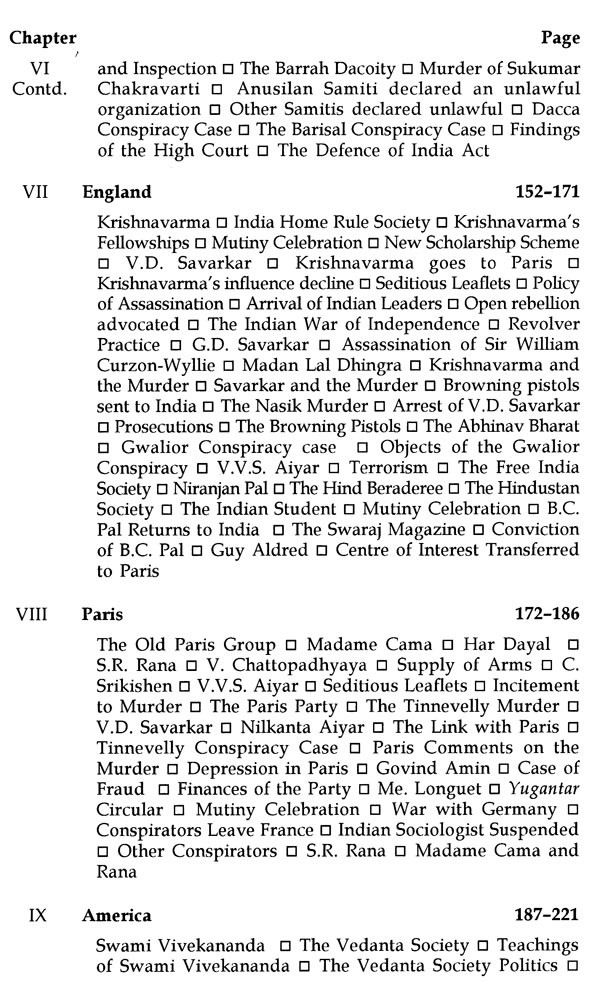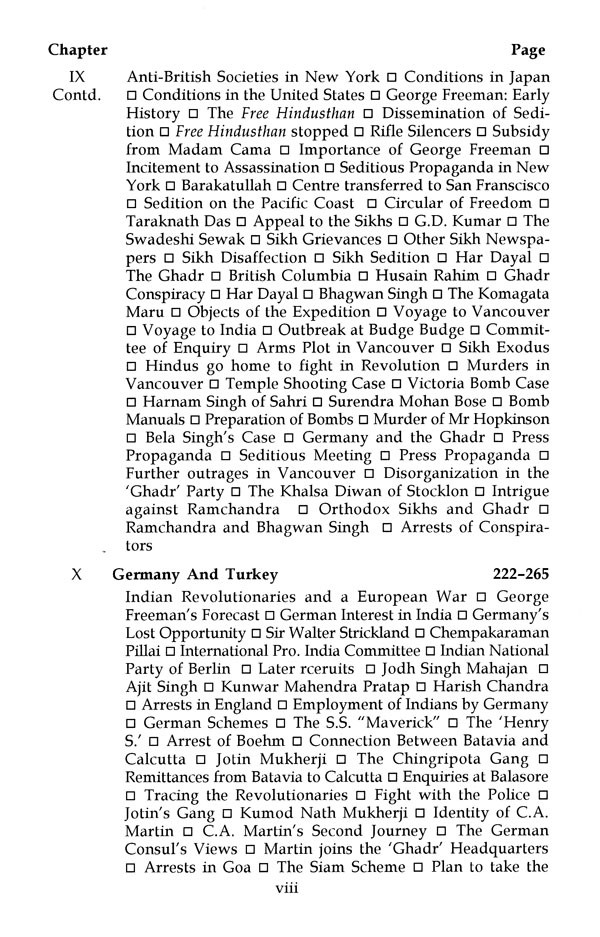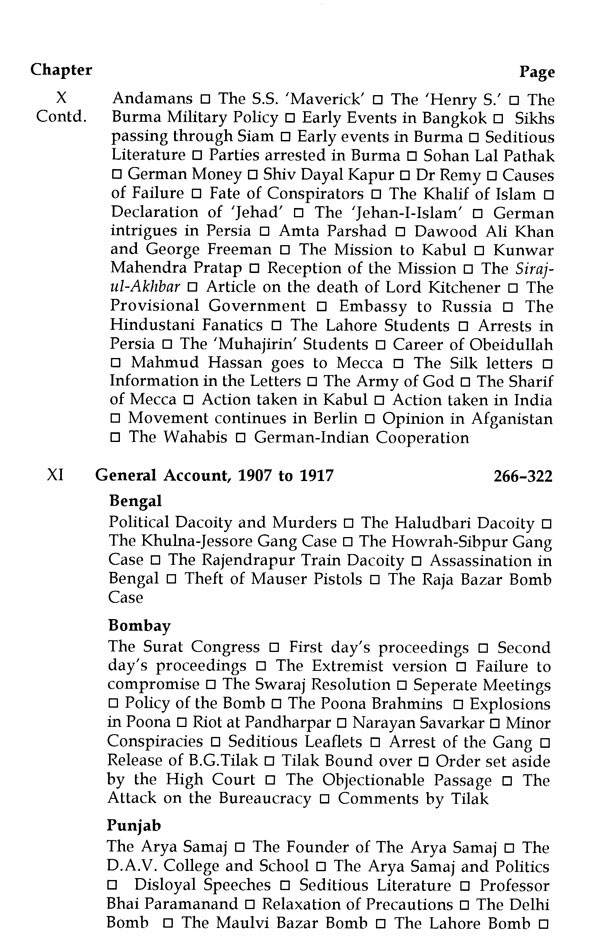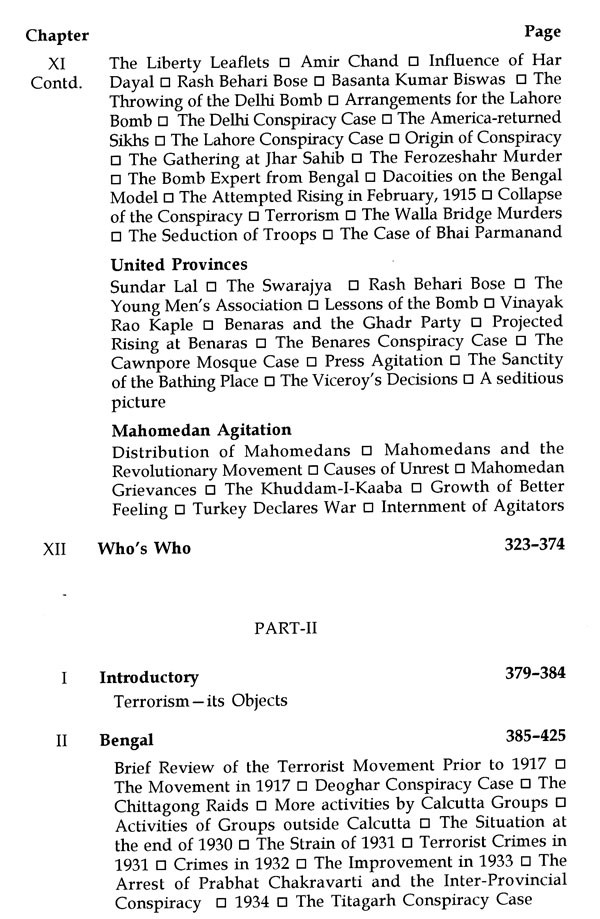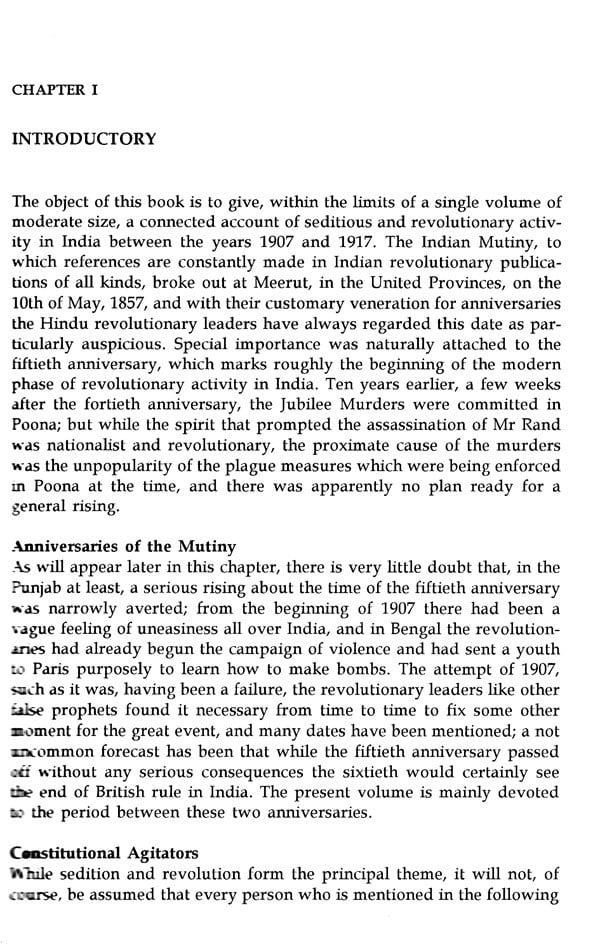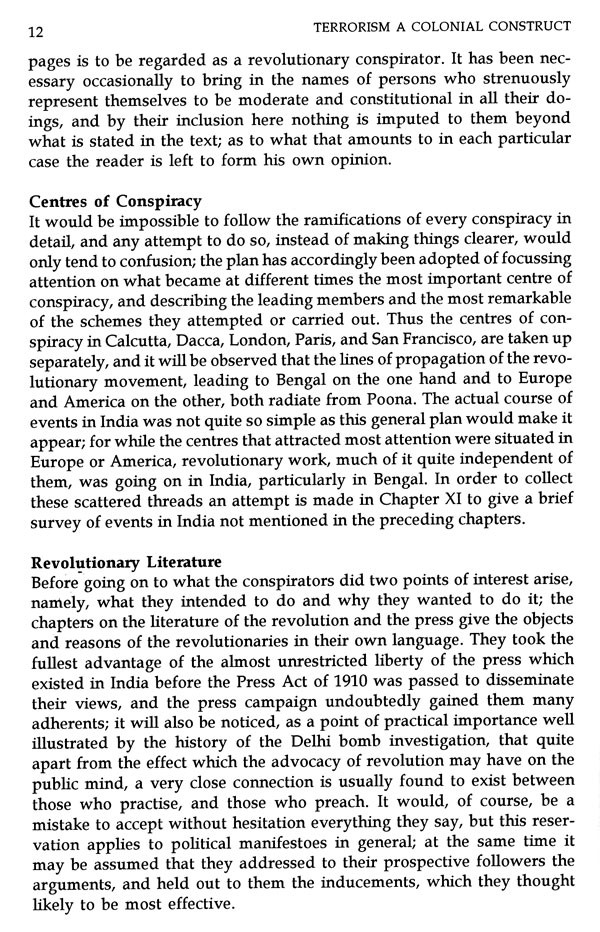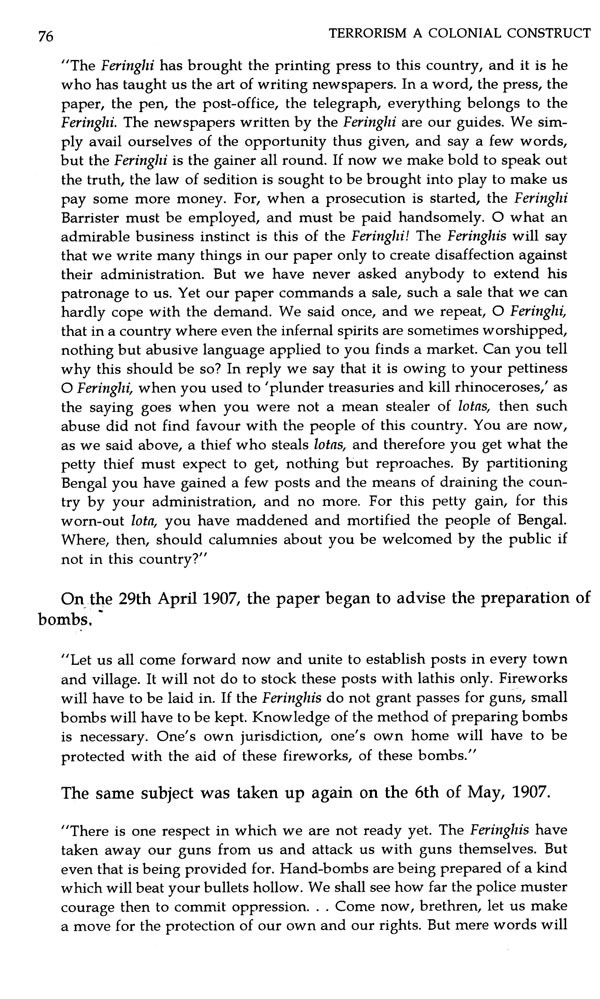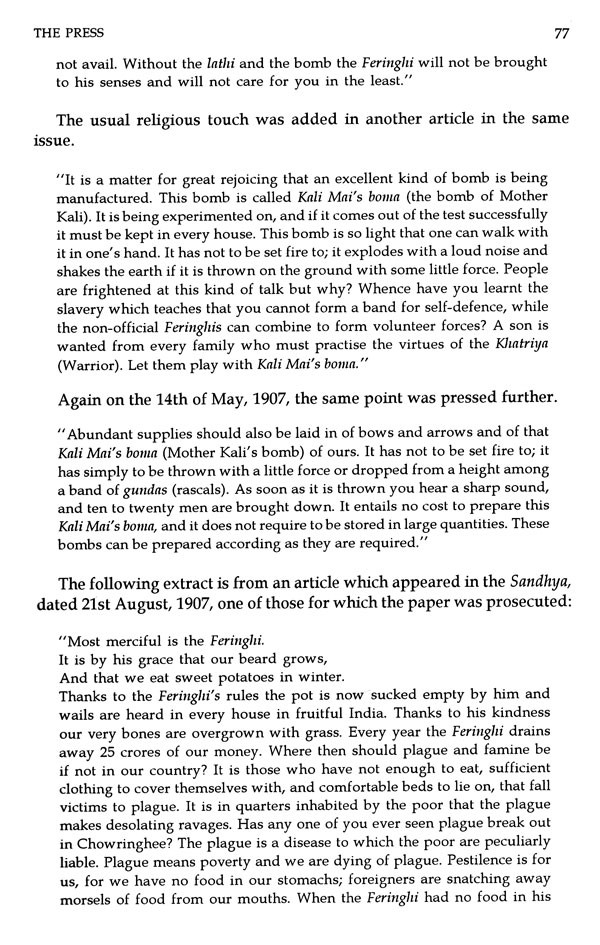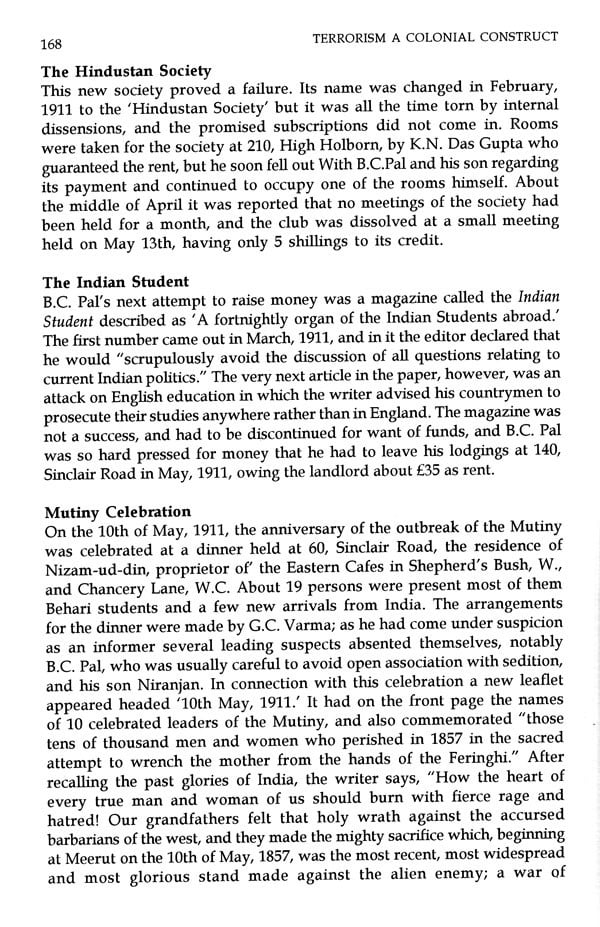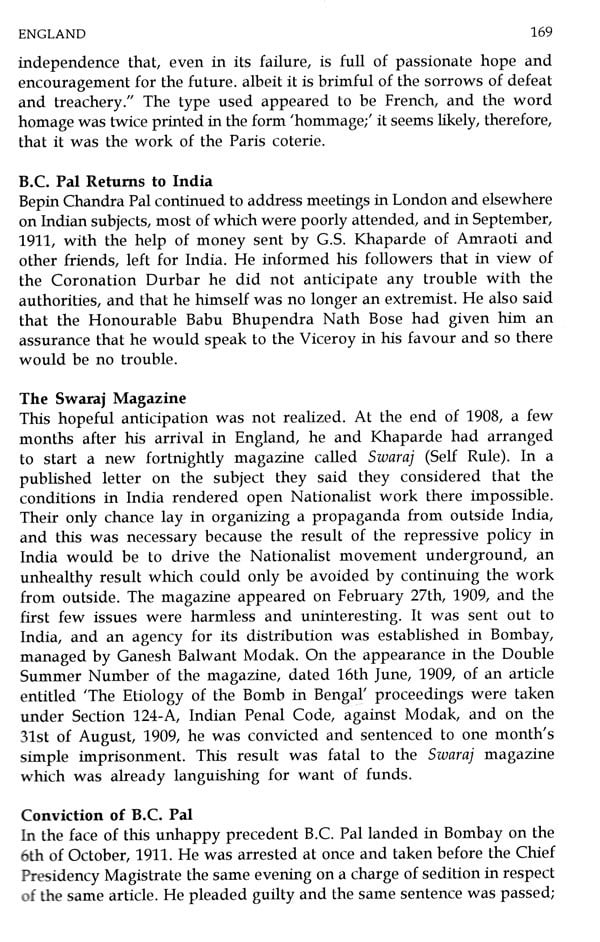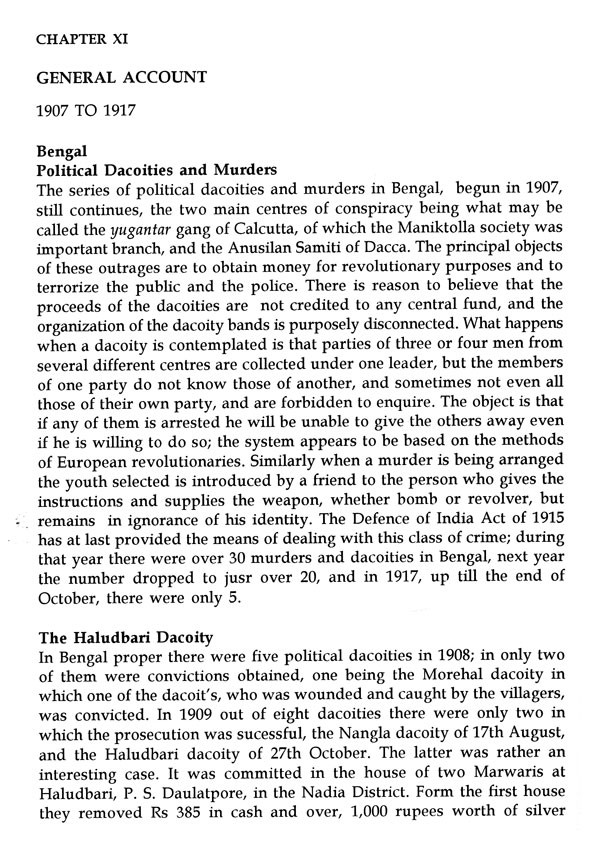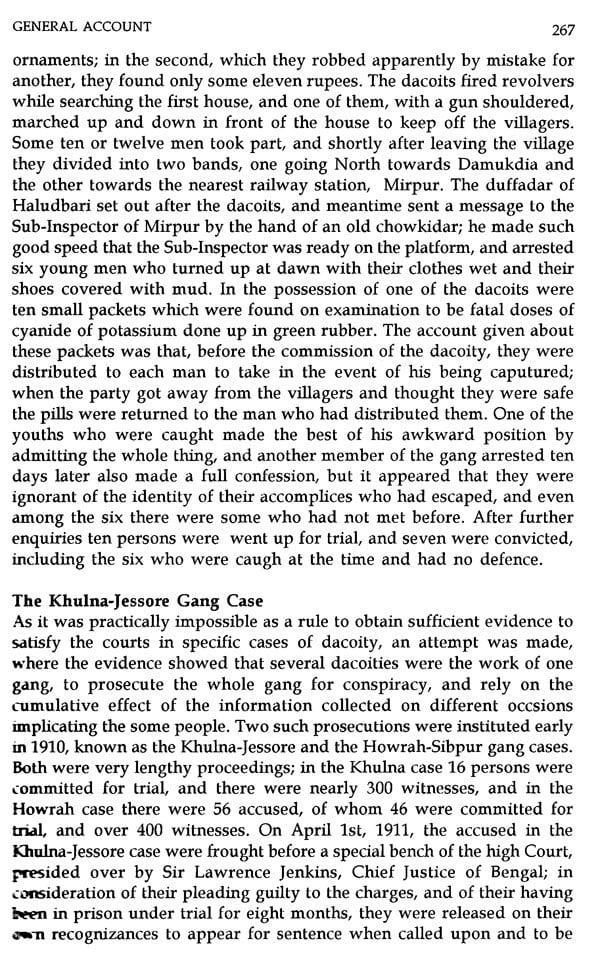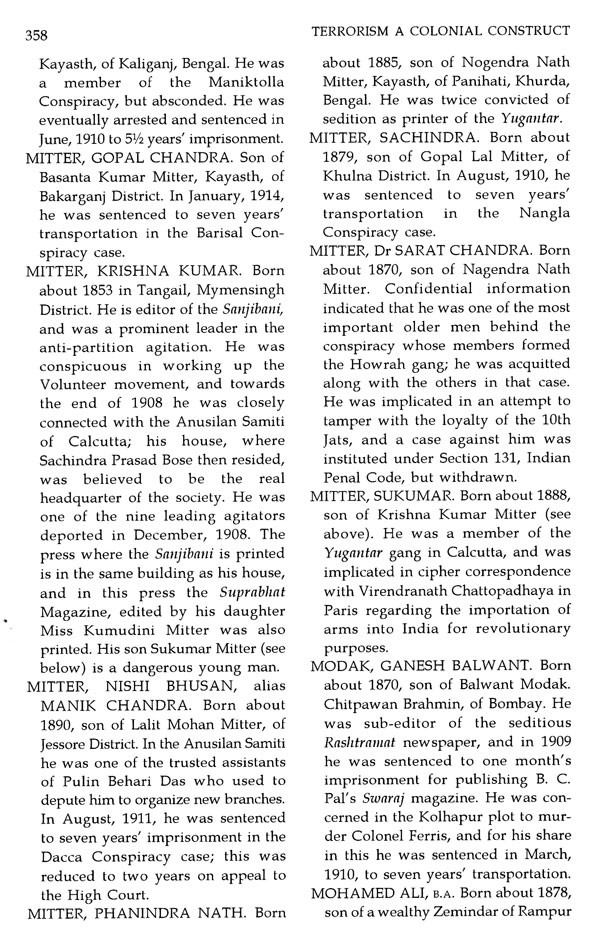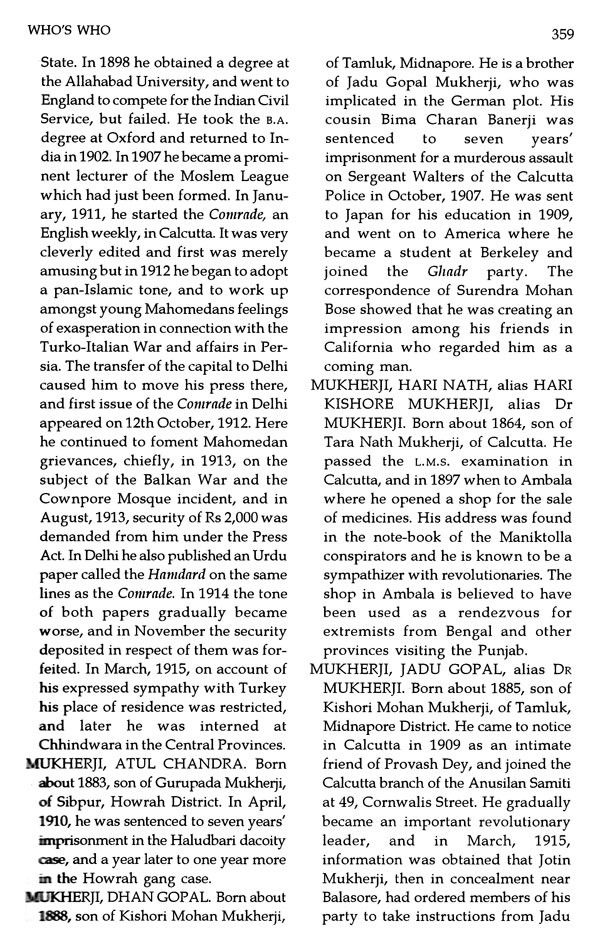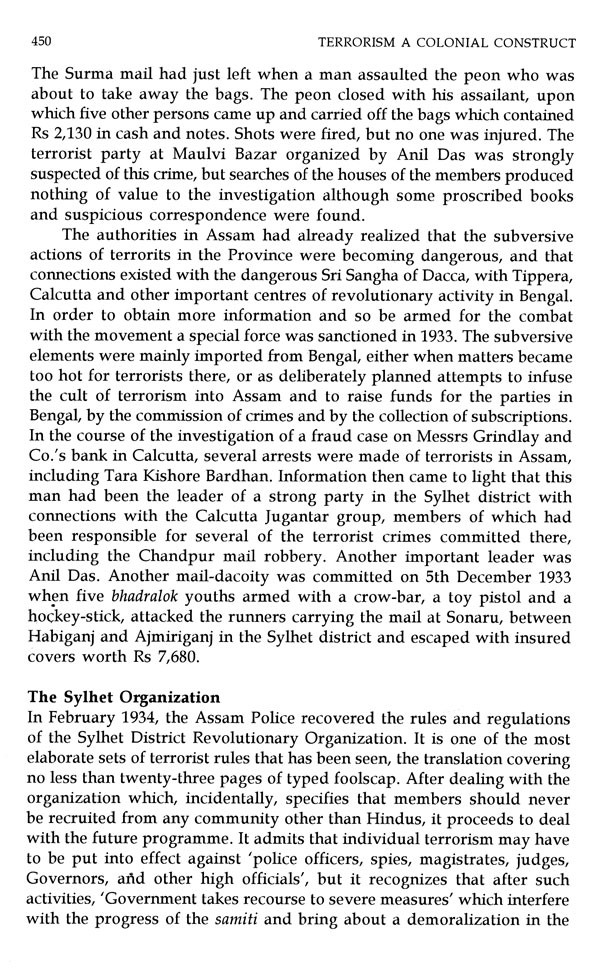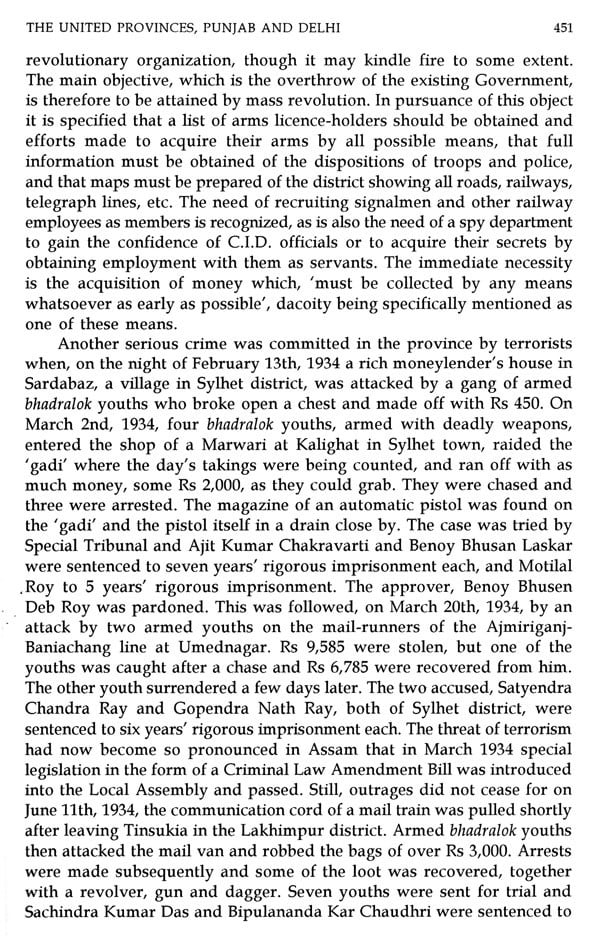
Terrorism (A Colonial Construct)
Book Specification
| Item Code: | NBZ864 |
| Author: | Ashoke Kumar Mukhopadhyay |
| Publisher: | SHISHU SAHITYA SAMSAD PVT LTD |
| Language: | English |
| Edition: | 2019 |
| ISBN: | 9788179551639 |
| Pages: | 636 |
| Cover: | HARDCOVER |
| Other Details | 9.50 X 6.15 inches |
| Weight | 1.05 kg |
Book Description
The book presents an account of nationalist revolutionary activities during three decades from 1907, as recorded by the Home Department of British India.
Stung by 'terrorist activities', the then Home department, for the benefit of senior officials in the administration, had published a number of secret political reports of which two publications - Political Trouble in India (1907-1917) and Terrorism in India (1917-1936) - are of great importance. While the Political Trouble in India (1907-1917) is the source book of the famous 'Sedition Committee Report prepared by the British, the second compilation, i.e. Terrorism in India (1917-1936) is also of considerable importance, for, the same was “intended to assist those, mainly police officers, whose duties require them to make a detailed study of the whole or portions of the past history of Terrorism."
The ‘Introduction' traces the origins and development of 'terrorist movements in India along with a brief summary of 'revolutionary activities' in various phases from 1897.
Ashoke Kumar Mukhopadhyay (b. 1955), a corporate communications professional, is known for his research based articles on pre independent militant nationalist movement and political biographies. A guest lecturer at the Department of Journalism and Mass Communications, Calcutta University, Mr Mukhopadhyay's works, among others, include Agnipurush (a political novel based on the life of a freedom fighter), Pratham Diner Robi (a collection of essays on Rabindranath Tagore) and Chena Para Achena Manush (a collection of essays on Kolkata). He has also edited four books - India and Communism, Mukti Kon Pathey (a compilation of essays brought out by the militant nationalists of Bengal in 1906-07), Partition of Bengal and Naxalities through the eyes of the Police. He has won literary awards for his articles.
Though the Great Revolt of 1857 was quelled, the British ruling class realized that it was no longer possible for them to control the spiralling resentment of the Indians as well as their proclivity to revolt, by mere dependence on the army. As part of a long-term project therefore, they took the initiative of establishing a fraternal relationship with all the reactionary forces including the princely states, feudal lords, zaminders and the elite Indians. For the structural growth of this alliance, the British had to give a number of concessions to these sections. Following the Great Revolt, the British rulers decided to make Indian princely states and the elite Indians the principal bulwark of the British administration in the country. As a result, throughout the country, socio-economic exploitation grew rampant. This new economic order that was totally based on exploitation gave birth to various kinds of protests. A spirit of self-protection and a will to assert national rights grew, leading to a new wave of anti-British agitations. In the rural area the farmers began to revolt anew. In the urban areas, the newly ambitious Indian capitalists, in order to extract the greatest number of privileges in economy and politics, began to build up pressures on the British rulers. In various mew industries, the working class organized themselves and launched movements for their rights. It was alongside this that the English-educated Indian middle classes were contending with acute economic hardship that led to growing resentment.
The principal ingredients that generate nationalism were already prevalent in the Indian society by the turn of the 20th century. The first component - presence of a tyrannical foreign government that remained mürinsically opposed to India's own industrial expansion and which looked aller interests of a huge foreign capital. The second, India's growing capitalist segment, restless for further expansion, and torn between collaboration and competition with the colonial power. The third, India's intellectual class who Thad had a British education, and yet due to financial weakness and lack of opportunities for upward mobility, were incensed and discontented to a very Thigh degree. The Indian nationalist movement is the outcome of these three factors. The middle class intellectual segment came forward as the first emissaries of a nationalist protest against foreign dominance.
**Contents and Sample Pages**
